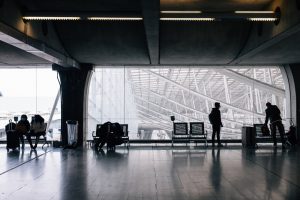Morocco is a vibrant and diverse country, offering a mix of old-world charm and modern conveniences. When traveling here, one of the most common questions visitors have is about the safety of public transportation. Whether you’re planning to explore the lively streets of Marrakech, the bustling city of Casablanca, or the peaceful coastal towns, understanding the safety of public transport will help you navigate the country with confidence.
1. Buses: Public buses are the most affordable way to get around Moroccan cities. The buses are generally safe, especially in major cities like Casablanca, Marrakech, and Rabat. However, they can be crowded, especially during peak hours. The roads in Morocco can be busy, and traffic jams are common, so traveling by bus might take longer than anticipated. It’s also important to be cautious of your belongings, as pickpocketing can sometimes occur in crowded buses.
2. Trains: For longer journeys between cities, the train system is an excellent choice. The trains in Morocco are relatively safe, with most trains being comfortable and modern, particularly on the newer high-speed lines like the Al Boraq. Train stations are well-equipped, and the trains run on time, making this an efficient and reliable mode of transport. However, be aware of your surroundings in train stations, as busy places can attract petty criminals.
3. Taxis: Taxis are widely available in Morocco and are a convenient way to travel. There are two types of taxis: petit taxis (small taxis) for short trips within cities, and grand taxis (large taxis) for longer distances or intercity travel. Petit taxis should always use the meter, so ensure it is turned on before starting your journey. Although taxi drivers are generally polite, be cautious when hiring a taxi at the airport or in less busy areas—agreeing on a fare before you get in can avoid misunderstandings. For long-distance trips, grand taxis are often shared with other passengers, which can make the journey less private but quite affordable.
4. Shared Taxis and Buses: In addition to regular taxis, Morocco has shared transport options, like grand taxis or small minivans that operate between cities or towns. These options can be a good choice for budget travelers, but it’s important to note that the driving standards on these services may not always meet Western expectations. Shared taxis can be less regulated, so choose reputable services when possible.
5. Safety Tips:
- Stay aware of your surroundings: In crowded places like bus stations or marketplaces, keep your valuables close and be mindful of pickpockets.
- Travel during the day: Public transportation can be less crowded and safer during daylight hours.
- Choose reputable services: When possible, choose official or well-known public transportation services to ensure your safety.
- Communication is key: If you’re unsure about how a service works or what the fare should be, don’t hesitate to ask locals or your hotel staff for advice.
6. Is It Safe for Tourists? Overall, public transportation in Morocco is safe for tourists, provided you take some basic precautions. As with traveling in any foreign country, it’s important to remain vigilant, especially in crowded areas. Most locals are friendly and helpful, and if you’re unsure about a transport option, there’s always someone nearby who can offer advice.
Conclusion: In short, public transportation in Morocco can be an affordable and efficient way to travel, and it’s generally safe. While there may be some occasional discomfort or delays, the benefits of experiencing Morocco through its local transport far outweigh the negatives. With a little awareness and planning, you’ll find that getting around Morocco is simple, safe, and an enjoyable part of your travel experience.



